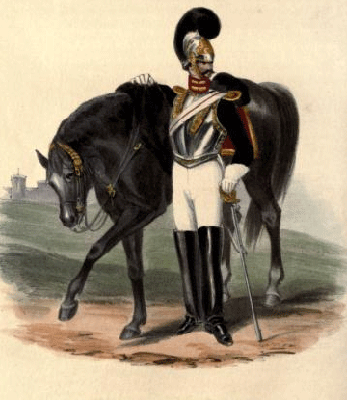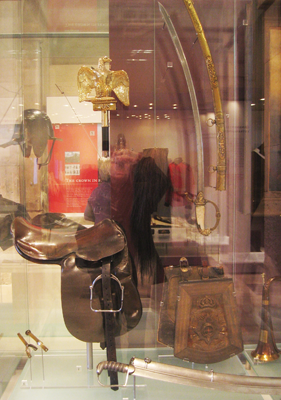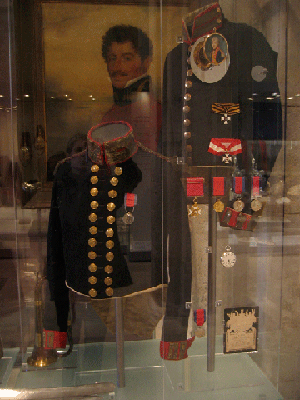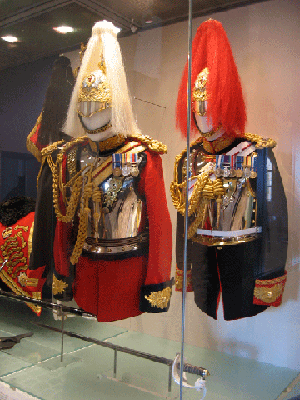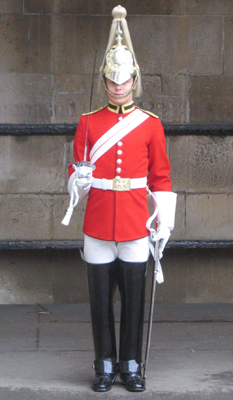The Horse Guards
I’m currently immersed in a new WIP that includes creating some senior military officers within the inner sanctum of Whitehall in 1812. Luckily I love research, for much as I enjoy giving my imagination free rein, it’s probably not a Good Idea to indulge in flights of fancy here. It’s artistic license to insert a make-believe duke into the ranks of the nobility . . . It’s asking for trouble from the High Sticklers to insert a mythical regiment into the British Army.
And why go to all the trouble when the actual facts make such great history! When I was in London last fall, I did some boots-on-the-ground poking around at the impressive building that served as a military command center during the Napoleonic Wars. Situated at right angles to the Admiralty, overlooking a massive parade ground that used to be a jousting field, the Horse Guards building still houses the top brass and, well, horses—which shouldn’t come as any surprise.
Curious about the perfectly polished soldiers who mount guard there everyday, I decided I needed to know a little bit about the history of the Horse Guards. So saddle up and let’s take a quick gallop through the illustrious history of the Household Cavalry . . .
Traditionally, the term “Household” refers to a country’s most elite units, as they were one ones used to guard a monarch and his household. The British Household Cavalry is made up of two units—the Blues and Royals (The Royal Horse Guards, known as the Blues, and the Royal Dragoons, known as the Royals were joined together in 1969) and the Life Guards.
The Royal Horse Guards were founded in 1650 on the orders of Oliver Cromwell. The regiment was commanded by the Earl of Oxford during the reign of King Charles II and as the color of its uniform was blue at the time, it was nicknamed “the Oxford Blues”, later shortened to the “Blues.” In 1750 the regiment became the Royal Horse Guards Blue. The Colonel-In-Chief is the Queen, and both Prince William and Prince Harry joined as cornets.
The Life Guards is made up of four different troops of horse guards raised by Charles II around the time of his restoration. In 1788, they were streamlined into two regiments called 1st Life Guards and 2nd Life Guards, and in 1815 they were part of The Household Brigade at the Battle of Waterloo.
Today, the Life Guards, which can be recognized by their red coats and white plumes, work in tandem with the Blues and Royals to form the Household Cavalry. One half is a modern armoured reconnaissance unit and the other half performs the ceremonial duties. Though they serve together, the Life Guards and the Blues and Royals maintain their regimental identity, with distinct uniforms and traditions, and their own colonel.There is a wonderful little museum on the Horse Guards located in the back of the main building, which include the original stables where one can watch the horses being saddled for the daily guard duties on their home turf. The exhibits feature vintage weapons, uniforms and memorabilia from the various campaigns throughout the regiment’s storied history, including battle flags and sabers from Waterloo. It’s well worth a visit if you are strolling down Whitehall Street.

